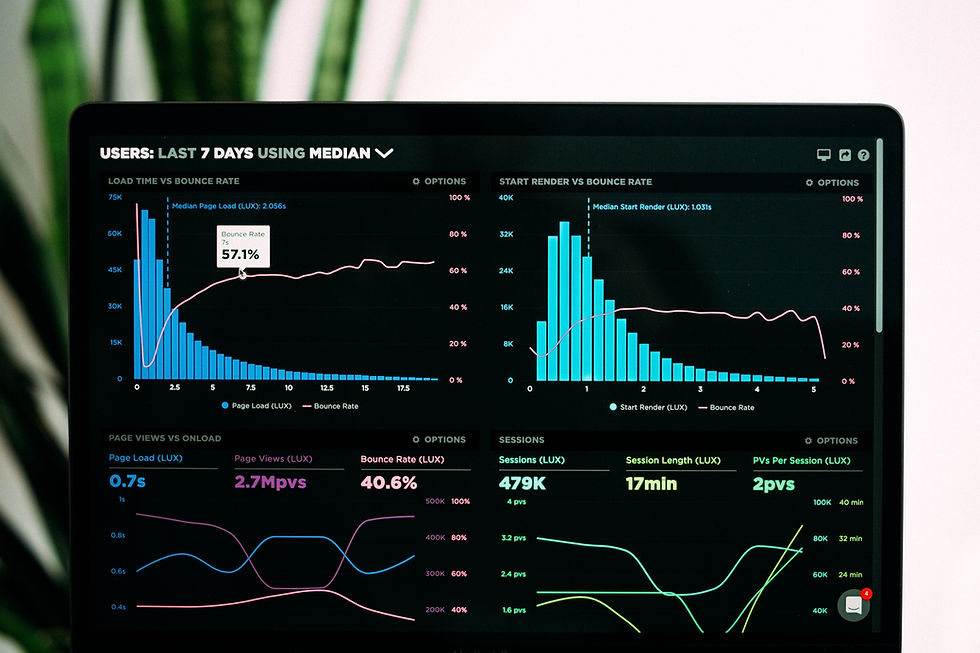Cracking the Cookie Code: Understanding and Overcoming User Consent Challenges for Analytics
- Hooman Hashemi

- Nov 30, 2023
- 3 min read
In the digital age, where data is king, businesses heavily rely on analytics to gain valuable insights into user behavior, enhance user experience, and drive informed decision-making. One crucial element in this data-driven landscape is the use of cookies, which enables websites to track and collect user information. However, the ubiquitous cookie banner, designed to obtain user consent for data collection, has become a stumbling block for many businesses. The challenge lies not just in the legal compliance but in users' reluctance to accept these banners, leading to potential data loss and, consequently, business setbacks. In this article, we will delve into the complexities surrounding cookie banners, the impact of user resistance on analytics, and propose recommendations and alternative solutions to address this critical issue. Understanding and Overcoming User Consent Challenges for Analytics

The Cookie Banner puzzle
Cookie banners have become a standard feature on virtually every website, a direct result of privacy regulations such as the General Data Protection Regulation (GDPR) and the ePrivacy Directive. These regulations mandate that websites obtain explicit consent from users before deploying cookies for tracking and analytics purposes. While the intentions behind these regulations are noble—to protect user privacy and ensure transparent data practices—they have inadvertently given rise to a challenge: user resistance to accepting cookie banners.
User Resistance: The Root of the Challenge
Several factors contribute to user resistance towards cookie banners. Primarily, users may feel overwhelmed by the sheer volume of banners they encounter during their online journeys, leading to a sense of fatigue and frustration. Additionally, concerns about privacy and the misuse of personal information have fueled a general mistrust among users, making them hesitant to grant consent.
The Impact on Analytics - A Data Drought
User resistance to cookie banners poses a significant threat to businesses heavily reliant on analytics. When users decline or ignore cookie consent, the data pool available for analysis shrinks, limiting the insights businesses can gather. This reduction in data not only hampers the accuracy of analytics but also impedes efforts to understand user behavior, preferences, and trends. As a result, businesses find themselves navigating the digital landscape with an incomplete map, hindering strategic decision-making and potentially losing their competitive edge.
Recommendations for Improving Cookie Banner Acceptance
Let's kick things off by jazzing up those cookie banners – it's the easiest win in getting users on board. We're talking low-hanging fruit here! Once we've nailed that, we'll dive into some cool tactics. Think user-friendly designs, clear info, and easy-breezy interactions. Ready for the ride?
Enhance Transparency and Communication:
Clearly communicate the purpose of data collection and the benefits users derive from consenting to cookies.
Employ user-friendly language in cookie banners to enhance comprehension and reduce anxiety.
Streamline Consent Processes:
Implement user-friendly interfaces that streamline the cookie consent process, making it quick and easy for users to understand and accept.
Provide users with granular control over the types of cookies they consent to, empowering them to make informed choices.
Educational Initiatives:
Develop educational content on the importance of cookies for website functionality, personalization, and improved user experience.
Use newsletters, blog posts, and FAQs to address common misconceptions and concerns about data privacy.
Personalized Consent Requests:
Tailor cookie consent requests based on user preferences, behaviors, and demographics to increase relevance and engagement.
Implement A/B testing to identify the most effective consent request designs and messaging.
Offer Value in Exchange for Consent:
Incentivize users to provide consent by offering exclusive access to content, discounts, or personalized experiences.
Clearly communicate the value proposition of consenting to cookies to encourage user participation.

Now, have you ever found yourself stuck in the optimization maze, wondering what to do when the usual tricks don't quite hit the mark? Well, buckle up because we're about to dive into the world of unconventional solutions. Imagine this as your secret weapon—a fresh perspective to tackle the challenges of user consent and data collection. Ready to explore? Let's navigate this uncharted territory together.
Implicit Consent Mechanisms:
Develop technologies that implicitly gather user consent through continuous user interaction and engagement, eliminating the need for explicit cookie banners.
Implement machine learning algorithms that predict user preferences and adjust data collection practices accordingly.
Blockchain-based Data Authorization:
Leverage blockchain technology to create a transparent and decentralized system for user data authorization.
Allow users to maintain control over their data through secure, blockchain-enabled consent mechanisms.
Anonymous Analytics:
Explore tools and technologies that enable anonymous analytics, preserving user privacy while still providing valuable insights for businesses.
Utilize differential privacy techniques to aggregate and analyze data without exposing individual user identities.
The challenges surrounding cookie banners and user resistance have highlighted the delicate balance between data-driven insights and user privacy. Businesses must proactively address these challenges to ensure the continued success of their analytics endeavors. By enhancing transparency, streamlining consent processes, and exploring alternative solutions, businesses can navigate the cookie conundrum and unlock the full potential of analytics in the evolving digital landscape. As we celebrate the one-year anniversary of this article, let it serve as a reminder of the ongoing need for innovation and adaptation in the face of evolving user expectations and regulatory landscapes.


